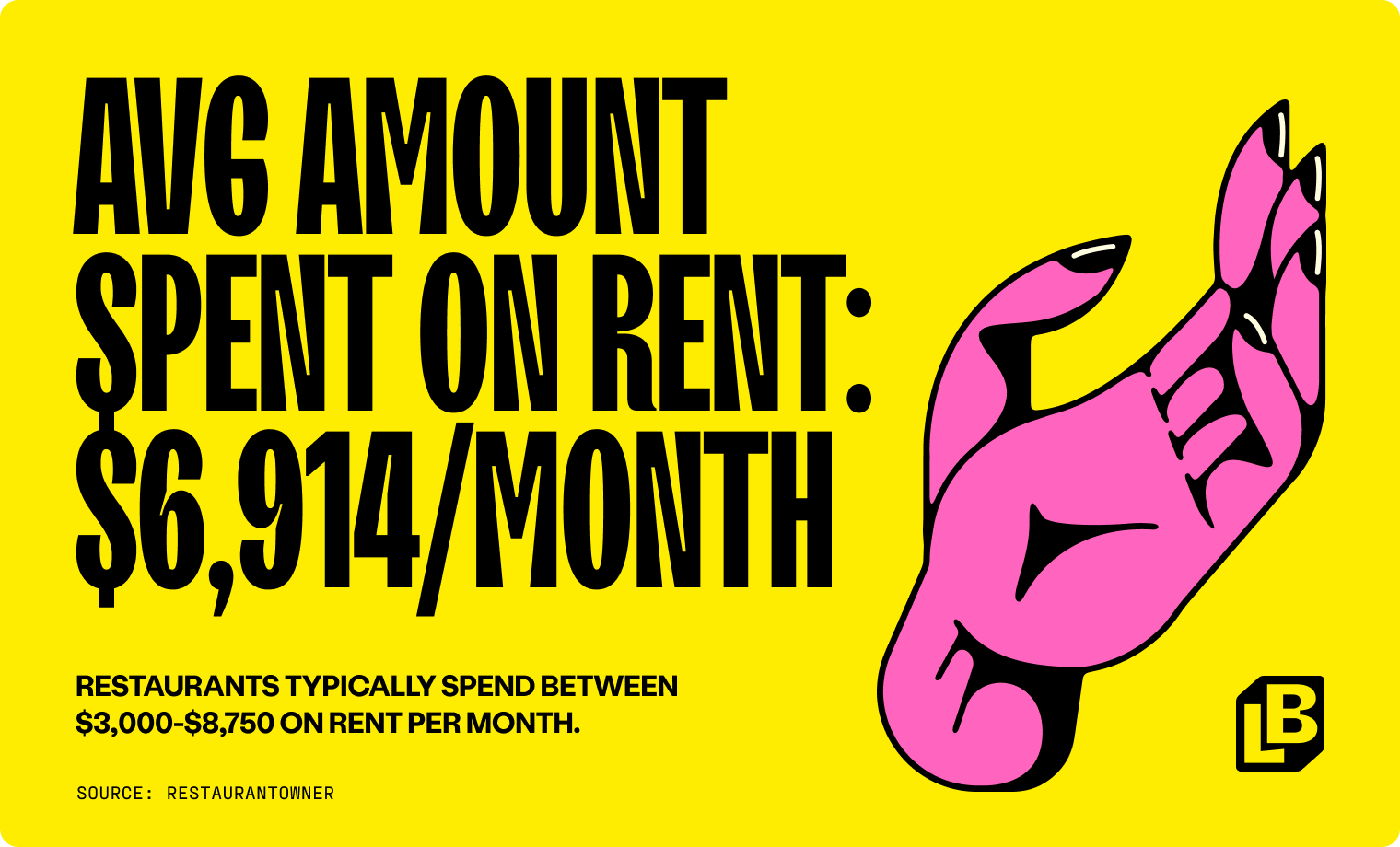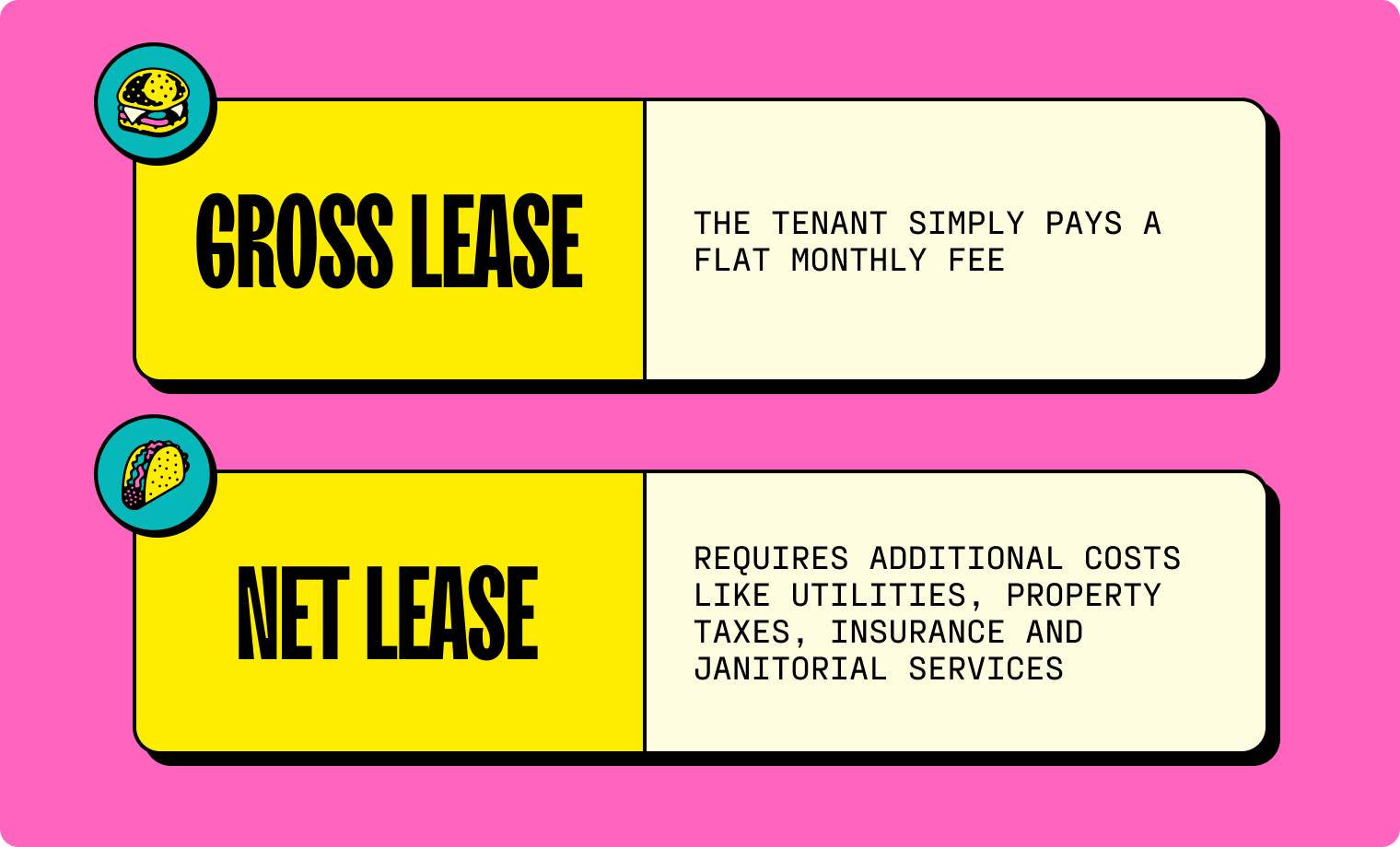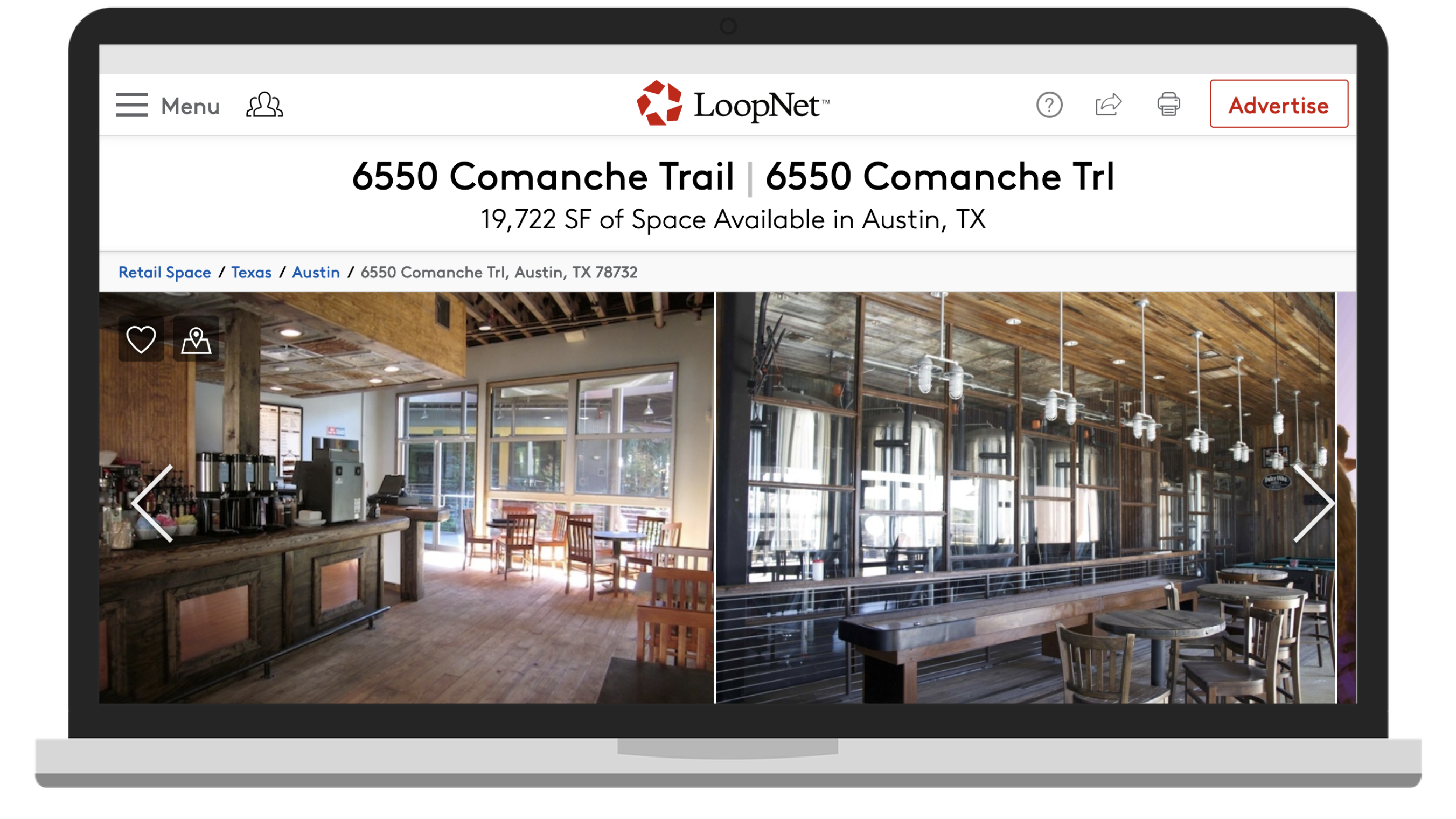Check Out This Guide:
Share
- Jump to:
Restaurateurs must have a firm grasp of business, marketing, customer service, food, and hospitality, but many don’t expect that they might have to dip their toes into real estate. If choosing to lease a space for their restaurant, restaurateurs will need to know how to pick the ideal location while also being able to negotiate a lease.
Choosing the right location for a restaurant business can be crucial to its success, especially in the first few months of being open. The location of a restaurant can be so excellent that it markets itself, but an off-the-beaten-path location can ensure that you will need to market your business heavily to get customers in the door.

Junior’s Time Square restaurant is the busiest out of its three locations in the city, and in 2019, it served approximately 914,500 meals. The downside to this prime location? The New York City cost of rent. Source: Restaurant Business, 2020
Your restaurant’s location can be more important than your menu and the dishes you serve. Even if the space seems like the right size and price, it is key to consider the location’s visibility, parking, accessibility, competition nearby, and the area’s demographic.
The cost of leasing a restaurant space is very dependent on location. According to a survey of 496 restaurants conducted by RestaurantOwner, restaurants typically spend between $3,000-$8,750 on rent per month. The average amount spent on rent was found to be $6,914 per month.

If leasing the right restaurant space is so important, what is a restaurateur to do if they have no real estate experience? Luckily, there are several steps they can take and resources they can use to make an informed decision about finding their future restaurant space and negotiating a commercial lease.
Steps for Leasing a Restaurant Space
When you are ready to start looking for a restaurant space to lease, ensure that you give yourself plenty of time. This process can be lengthy, and you should be prepared to not sign the first place you see. By giving yourself ample time, it will allow you to view all the viable options and make a well-thought-out decision without the pressure of feeling rushed. On average, it takes about six months to find the right spot and sign a lease. This does not factor in the amount of time it will take to build out and remodel the space.
Know what exactly you need before you start looking. Being prepared with your budget, desired square footage, and business plan will reduce the amount of time wasted on subpar locations that don’t fit the requirements. If you know exactly what you are looking for and what you can be flexible on prior to beginning your search, it will make the search for an ideal commercial space run smoothly.
1. Ensure you have a good business plan.
A good business plan sets your future restaurant up for success, and this is true for any new startup. This step helps you become prepared, but it also shows potential investors and partners that you are prepared for this venture. Choosing the right location is a crucial step in opening a new restaurant, and therefore, a restaurant business plan will detail your research into potential locations.
A business plan will also give detail into the restaurant’s concept. The concept will be a major determining factor for where your establishment should be located. For example, you might want your quick-service, affordable sandwich shop right near a university. Your idea for a full-service jazz supper club would work best in a downtown area, ideally in an area with a buzzing nightlife.

Chipotle Mexican Grill’s Form 10 K shows its occupancy costs are equal to 6.3% of revenue. Source: Restaurant Real Estate Advisors, 2020
2. Know your budget.
Before you even begin your search, set your budget. A clear budget will eliminate all options in your search that won’t work, therefore saving you time. This step is especially important for first-time restaurateurs who don’t know how much they should be spending on rent.
While setting a budget, determine factors like your projected revenue upon opening, and if you have any wiggle room. Prepare for worst-case financial scenarios, and factor this into your budget. Can you still afford to pay rent if you don’t hit your target revenue within the first few months? What is your game plan for uncontrollable external factors that could affect your revenue, like the COVID-19 pandemic?
3. Research potential locations.
Your restaurant’s location affects so many other components of the business, including overhead costs, utility bills, and marketing. Do market research for the area you intend to operate in, and determine if the demographic in the area is your target market. Check to see how many competitors are nearby, and ideally, if your restaurant will be fulfilling an unmet need in the area.
4. Know how much square footage you need.
How large do you want your dining room? Or, do you even need a full, indoor dining room for your restaurant concept? What size of kitchen is needed to fulfill your estimated amount of orders? There are many components to consider when calculating your restaurant’s required square footage. If you are unclear what size of restaurant you need, it would likely be helpful to look at other restaurants with similar concepts to yours and see how they operate in their space.
Rent is often calculated by each square foot in the space. When visiting a space you are interested in, be sure to measure it yourself. Many tenants simply trust the square footage listed on the lease agreement - don’t! Measure it yourself to ensure you aren’t overpaying for phantom space.
5. Calculate estimated revenue needed to cover expenses.
Your rent budget will depend on your restaurant’s estimated revenue. The general rule in the restaurant industry is that rent should fall between 6 to 10 percent of your gross sales or projected revenues. Anything over that, and the cost of rent is then cutting into other budget categories and profits. For example, If your restaurant makes $500,000 per year, then you can afford to pay between $30,000-$50,000 per year in rent. Therefore, per month, you can afford to spend between $2,500-$4,166 per month on rent.
Check Out This Article:
WHY EVERY RESTAURANT OWNER SHOULD CHECK KEY PERFORMANCE INDICATORS (KPIS)
6. Visit and assess the space’s potential.
You hopefully would not rent a place to live unseen, and the same goes for renting a restaurant space. Sure, you can look at photos online, Google Maps, and sometimes even a video tour of the space, but this still does not provide the level of insight that an in-person visit does. When you visit the space in person, you will be able to get a feel for what your future customers will experience. Touring inside the space can help you visualize the layout of the future establishment, and get an idea of renovations that are needed.
While you’re visiting the space, notice the amount of foot traffic in the area. Observe the potential for parking, and if there is outdoor space for seating (this is especially important since we are not yet out of the pandemic). Are there any points of interest nearby, like a park, music, venue, or museum, that would attract customers to the area? There might be a school or several offices nearby that would bring in rushes during the morning, lunch, and mid-afternoon. Coming to the space at different times of the day and days of the week will help you understand when peak and slow times will occur.
7. If able, talk to past tenants.
Past tenants will have the most insight on what it was like to operate a business in the commercial space you are looking into. They will also have insight into the landlord, neighboring businesses, and what it is like to operate a business in the area. They are the eyes and ears of the space, and can provide information that the landlord or real estate website won’t be able to.
How to Negotiate Restaurant Space Pricing
After you have found a location you desire, the next step is to go over and negotiate the lease. The more prepared you are, the more leverage you will have in negotiation. In addition to being equipped with a great business plan, you may need to show a personal balance sheet with assets and liabilities, bank statements, tax returns, and a credit report.
When you are prepared to start looking at commercial real estate, you will need to be aware of the different types of monthly leases. There are two types of leases: a gross lease and a net lease. In a gross lease, the tenant simply pays a flat monthly fee, but a net lease requires additional operational costs (like utilities, property taxes, insurance, and janitorial services).

Negotiate to win.
Negotiating a restaurant lease may not be easy, but pushing for what you want is worth it. A large chunk of your budget will be spent on monthly rent, so you want to make sure that it is exactly what you want. If you are well-prepared with your financials and business plan, this will give you a leg up in the negotiation process. Before heading into negotiations, knowing how long the space has been vacant for and the tenant turnover rate will be helpful.
Don’t be afraid to walk.
Remember, as the restaurateur, you are the one that holds the power and money. If the landlord won’t budge, and you’re not satisfied, it might be time to walk away from the lease agreement in question.
Consider using a broker.
Negotiating might not be your strong suit; in this case, consider using a broker. You can think of a broker as doing all of the “heavy lifting” for you. You simply need to decide the area you’re interested in, your budget, and desired features, and the broker will do the searching and negotiating for you. These professionals will also have market data and information on zoning laws and property management. Commercial real estate brokers know the ins and outs of the industry, and can guarantee that you are well-prepared to negotiate to win. A professional set of eyes on the lease terms can catch any glaring issues you may have missed before.
Ask the right questions.
With so many different components to consider, it can be easy to get overwhelmed. Writing down well-thought-out questions prior to negotiating a restaurant lease will ensure that you are fully prepared. Considering questions you need to ask before going to view a commercial space will also be a great help in the search process. In addition to asking questions about the actual space, you’ll want to ask about the lease terms. Brainstorm everything you need and want for your future restaurant, and contemplate items that are non-negotiable for the lease.
Do not accept the first offer.
Negotiating does not mean settling for the first counteroffer. There may be a decent amount of back-and-forth negotiations, but don’t be deterred or give in. Remember, as the future business owner and restaurateur, you have the upperhand. You are the one who will be paying rent, and you have the ability to walk away if necessary.
Ask for more than you want.
Start with higher demands, and be prepared to work your way down to a compromise. Do not start off by offering the bare minimum of your requirements - it is almost certain that you will end up getting less than what you wanted. Starting low and working your way up with higher demands is nearly impossible to do.
Ensure you are educated.
When beginning negotiations, you don’t want to feel confused or overwhelmed. Taking the time to educate yourself will give you the confidence needed to understand lease terms and successfully negotiate. Heading into this process unprepared can cause delays to occur.
How to Find Restaurant Space to Lease
You've developed a killer business plan, planned out the square footage requirements of your restaurant, and educated yourself on how to negotiate a lease. Now, you are ready to go out in the world and find the perfect space for your restaurant.
As a future business owner, you have likely already envisioned where you want your restaurant to be and how it looks. Keep this vision in mind as you look for the right space, but also remember to have flexibility with your vision.
Visit the area.
One way to go about finding a restaurant space to lease is by simply driving or walking around the area you are interested in. Pick out a few desired areas where your concept would function well, and set aside time to conduct a search. A shopping center or an area with a high concentration of retail spaces is a great place to start. Keep your eyes peeled for a storefront that has signage announcing “For Lease”. Consider other businesses you would like your restaurant to be around, such as bars, entertainment venues, offices, or a university, and start your search here.
Hire a commercial real estate broker.
In a highly competitive market, working with a commercial real estate broker may be the best option. In big cities like Los Angeles and New York, you could find yourself fighting for the same high-traffic commercial property that five other restaurateurs are interested in. These professionals know specific areas very well, and may have connections to spaces for lease that are not even on the market yet.

LoopNet is a commercial real estate site that allows users to look for various commercial and retail spaces for lease or for sale. Source: Loopnet, 2022
Use online services.
Several online services exist that can assist you in your search for the perfect restaurant location. Think of these sites like Zillow, except for commercial or retail spaces. Although these platforms are not specifically for restaurant spaces, all offer filters that allow you to only search for what you are looking for. Here are a few sites you can use:
When using these sites, you’ll find an extensive variety of lease rates, floor plans, and square footage. Whether you are a small, independent business, a fresh-to-the-scene start-up, or a well-established brand, you’ll be able to filter through and only see options that fit your criteria and needs.
Finding the right location for your restaurant is crucial to success
At a certain point in a restaurateur's career, they will need to put on the real estate agent’s hat to find the perfect restaurant location. Finding the ideal space could take upwards of six months, and that doesn’t include the time needed for renovations. The second challenge is navigating the terms of a commercial lease. Give yourself plenty of time for the search process, educate yourself on a commercial lease, and work with a broker for extra help. Finding the right commercial space for your restaurant may be one of the most difficult and time-consuming parts of opening a new business, but it is also one of the most important - so make your time and effort put into this process worth it.